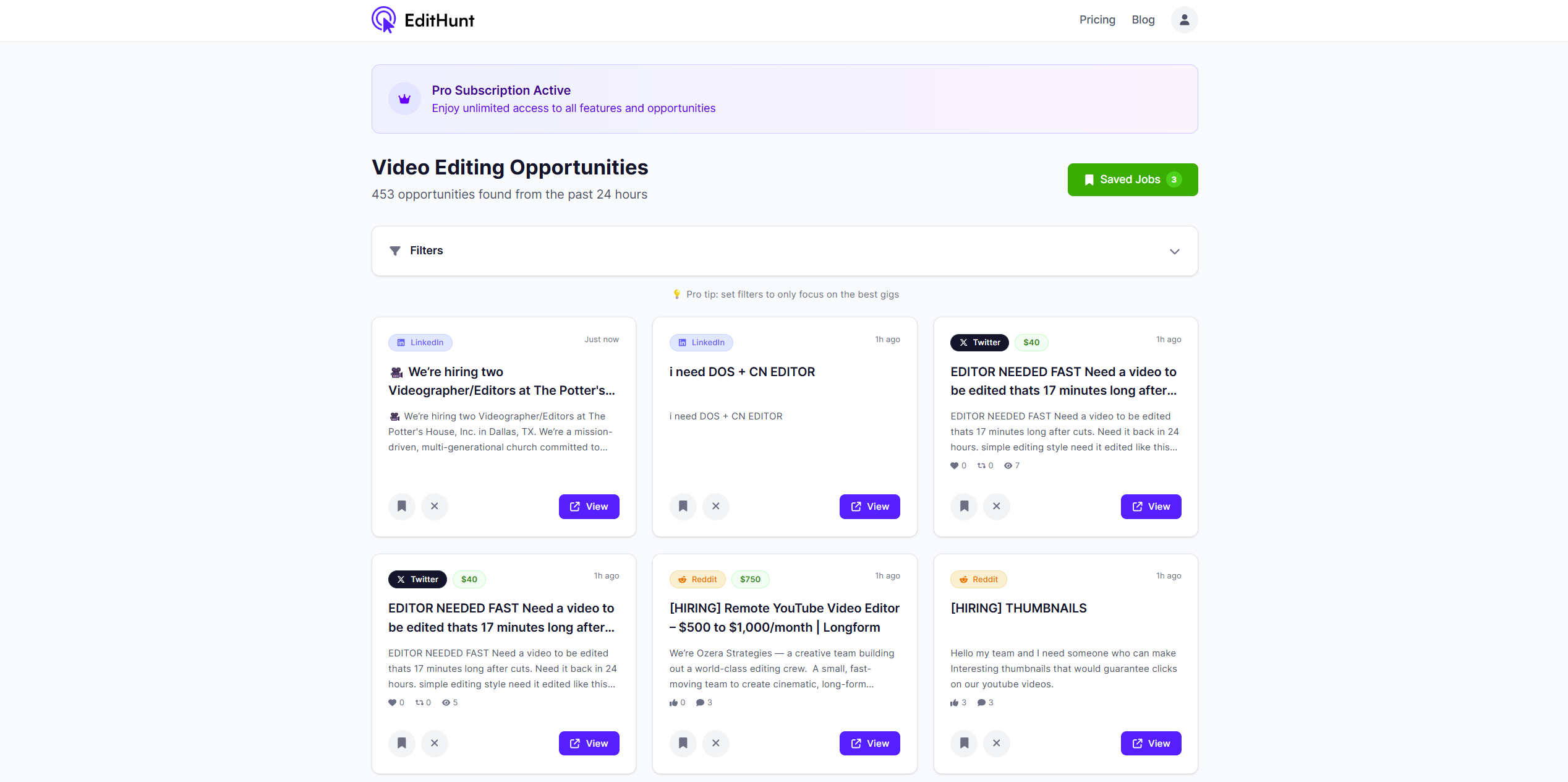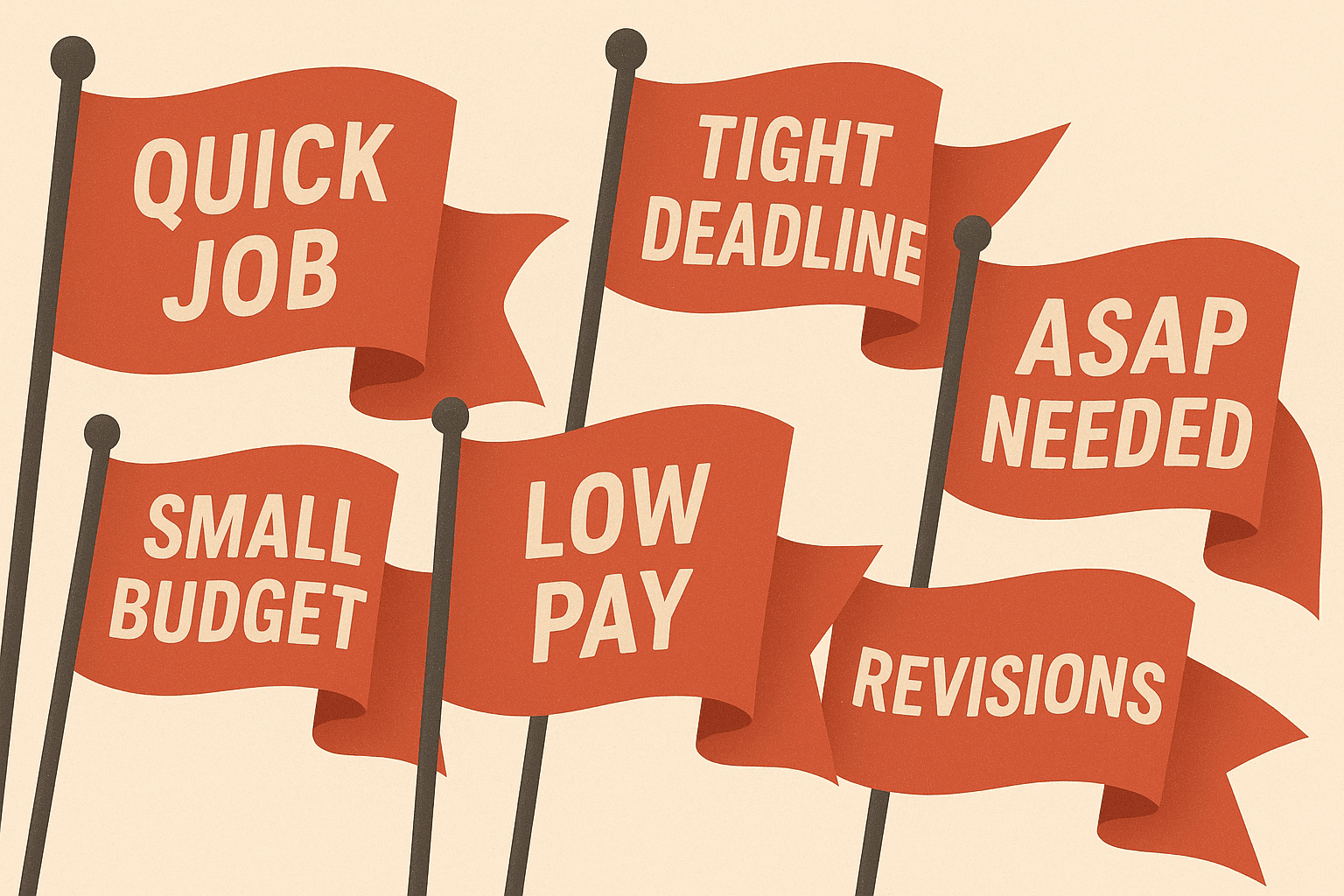In the crowded world of video editing, landing clients is a big win. But not all clients are created equal, and you can't find yourself accepting to work with low quality clients that turn your work into a nightmare.
We've asked tens of video editors what red flags they think are the most important when analyzing a potential client and. Here are the 8 most common types of clients that you should avoid at all costs. ❌
1. The "Quick and Easy" Client
The Red Flag: They describe their project as "quick," "easy," or "something a student could do."
Why It's Dangerous: If the job is so simple, why aren't they doing it themselves? This language usually masks unrealistic expectations and a fundamental misunderstanding of professional video work. These clients often expect professional results at amateur prices.
What They Really Mean: "I don't value your expertise and I'm not willing to pay for quality."
Note: if you do ever find yourself working for someone like this, prepare yourself for unclear requirements, endless revisions and late payments.
2. The Leader
The Red Flag: Their initial message is a massive paragraph listing dozens of specific requirements, creative directions, and technical specifications.
Why It's Dangerous: Excessive detail in the initial request usually indicates a micromanager who will never be satisfied. They've likely thought through every possible scenario except the one where they're happy with the final result.
The Reality: More requirements = more revisions = more unpaid time = a project that will never truly end. You're setting yourself up for suffering by committing to this client.
3. The Upfront Payment Avoider
The Red Flag: They're hesitant, evasive, or refuse to pay (at least a part) upfront.
Why It's Dangerous: Payment terms reveal everything about a client's seriousness and financial stability. If they can't commit to standard industry practices, they're either broke, planning to disappear, or both.
Professional Standard: Legitimate businesses who can afford your service understand that 50% upfront is industry standard and protects both parties.
4. The Negotiator
The Red Flag: They keep pushing for lower prices
Why It's Dangerous: Clients who nickel-and-dime you from the start will continue this behavior throughout the project. They don't respect your time or expertise, and they'll likely dispute final payment too.
The Pattern: First they want a discount, then they want extra work for free, then they'll find reasons not to pay the final invoice.
5. The Dreamer
The Red Flag: Their project description is full of buzzwords like "viral," "cinematic," "cutting-edge," but lacks any concrete details.
Why It's Dangerous: They have no clear vision and are expecting you to be a mind reader. They're chasing trends they don't understand and will blame you when the results don't match their impossible expectations.
Translation: "Make my video go viral" really means "I have no marketing strategy and I'm hoping editing magic will solve that."
6. The Informal Client
The Red Flag: They seem uncomfortable with contracts, want to keep everything "informal," or suggest using only text messages or WhatsApp for communication.
Why It's Dangerous: Avoiding formal agreements means they want maximum flexibility to change terms, scope, or payment in their favor. This is also a huge sign they're going to ghost you at some point.
Warning Signs: They prefer voice messages over written communication, avoid email, or act manipulative in their communication.
7. The Last-Minute Client
The Red Flag: They need everything done "ASAP," "tomorrow," or with an impossibly tight deadline they could have avoided with basic planning.
Why It's Dangerous: Poor planning on their part becomes your emergency. These clients often:
- Pay late because they're disorganized
- Are toxic in their communication
- Change requirements mid-project because they "just thought of something"
- Expect you to work weekends and nights
8. The Improviser
The Red Flag: They frequently use phrases like "let's try this and see," "we might want to change direction," or "we'll figure it out as we go."
Why It's Dangerous: Indecisive clients create scope creep nightmares. They'll have you create multiple versions, change their mind after approving work, and expect unlimited revisions because they were "just testing ideas."
The Cost: What starts as a 2-week project becomes 2 months of constant changes and unpaid revision work.
How to Protect Yourself
Set Boundaries Early: Set some boundaries that if a client doesn't respect, you don't work with them.-
Abundance: Create an abundance of leads so that you don't have to settle for below-average clients. More info on this below.
Quality Over Quantity: It's better to have fewer good clients than many problematic ones. Just 3-4 that you work long-term with can be enough.
Finding Better Clients
The truth is, great clients are out there — you just need to know where to look and how to filter out the problematic ones early.
This is exactly why tools like EditHunt exist. Instead of wading through endless low-quality postings filled with red flags, EditHunt filters job opportunities in real-time, helping you focus on serious clients who understand the value of professional video editing.
EditHunt scans multiple platforms and uses intelligent filtering to surface legitimate opportunities from clients who:
- Post clear project requirements
- Offer fair compensation
- Have realistic timelines
- Understand professional standards
Want to spend less time dodging red flags and more time working with quality clients? Try EditHunt free for 7 days and see the difference quality lead filtering makes.

Remember: Your time and expertise are valuable. Don't let problematic clients convince you otherwise. The sooner you learn to spot these red flags, the sooner you can focus on building relationships with clients who respect your work and pay you what you're worth.
